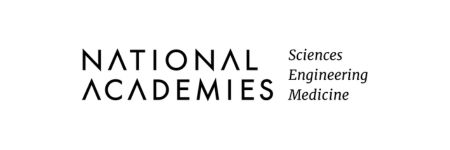Army Research Laboratory (ARL) Distinguished Postdoctoral Fellowships
Army Research Laboratory (ARL) Distinguished Postdoctoral Fellowships provide early career researchers the opportunity to pursue independent research of their own choosing that supports the mission of ARL. Candidates must display extraordinary ability in scientific research, show clear promise of becoming outstanding leaders, and are expected to have already successfully tackled a major scientific or engineering problem during their thesis work or to have provided a new approach or insight, evidenced by a recognized impact in their field.
For more than 50 years, the Army Research Laboratory (ARL) and its forerunner organizations - including the Army Ballistics Research Laboratory that played a major role during WWII - have conducted the great majority of the Army's basic science programs. Among their many successes, ARL civilian employees helped develop the proximity fuze, worked to develop ENIAC (Electronic Numerical Integrator and Computer, the first operational, general purpose, electronic digital computer), grew some of the first synthetic large quartz crystals, and developed the titanium alloy Ti-6Al-4V. Currently, ARL scientists and engineers are pioneering research in such areas as neuroscience, energetic materials and propulsion, electronics technologies, network sciences, quantum information science, virtual interfaces, and synthetic environments and autonomous systems. They are leaders in modeling and simulation, and have high performance computing resources on-site. They expand into emerging frontier areas, such as they did, for example, over the past decade in quantum information and quantum networks.

Fellowships
In recognition of outstanding achievements in research, ARL has established six named fellowships:
- The Harry Diamond Distinguished Postdoctoral Fellowship recognizes the significant work that Harry Diamond performed in inventing the proximity fuze, described at the time as “one of the outstanding scientific developments of World War II ... second only to the atomic bomb.”
- The George F. Adams Distinguished Postdoctoral Fellowship recognizes the early work in computational chemistry that Dr. Adams pioneered at the Army’s Ballistics Research Lab. By recognizing the importance of theoretical chemistry, he laid the foundations for quantum mechanical predictions of structures of small molecules and energetic materials for the Army, a critical enabler for present-day ARL multi-scale computational research.
- The Robert J. Eichelberger Distinguished Postdoctoral Fellowship recognizes the significant contributions made by Dr. Eichelberger to detonation physics and electromagnetic phenomena induced by strong shocks in solids, and for his role as Director of the Army’s Ballistics Research Lab, from 1967 to 1986.
- The ENIAC Distinguished Postdoctoral Fellowship recognizes the ENIAC computer which was designed and constructed for the United States Army, Ordnance Corps, Research and Development Command during WWII. The construction contract was signed on June 5, 1943. Development began in secret at the University of Pennsylvania's Moore School of Electrical Engineering under the code name "Project PX." Once completed, ENIAC was housed and run by the Army’s Ballistic Research Laboratory.
- The Brad E. Forch Distinguished Postdoctoral Fellowship was established to honor an ARL scientist who, in addition to his outstanding technical accomplishments, was renowned for his broad expertise and his spirit of volunteerism. Dr. Forch began his Army career as NRC Research Associate and quickly moved up the ranks to career scientist, to team leader, to branch chief, and ultimately to the Army's highest rank of ST, serving as the expert in ballistics and energetic materials. His many technical achievements include the development of laser ignition technology for the 155-mm self-propelled howitzer.
- The Frances Elizabeth (Betty) Snyder (Holberton) Distinguished Postdoctoral Fellowship (aka the Betty Snyder Holberton Fellowship) recognizes groundbreaking work in computer programming at the Army Ballistic Research Laboratory. Snyder Holberton was a brilliant mathematician and pioneer of computer technology. She was one of six women "computers" selected to program the Electronic Numerical Integrator and Computer (ENIAC) and went on to help develop the Universal Automatic Computer (UNIVAC), the C-10 instruction set for BINAC, and revisions of the Fortran language standard ("FORTRAN 77" and "FORTRAN 90").
Award Details
The following benefits are available to Fellows:
- Stipend: $115,000/year
- Health insurance
- Paid relocation
- Professional travel allowance
Fellowship Criteria
Applicants must agree to meet specific criteria to be selected for an Army Research Laboratory (ARL) Distinguished Postdoctoral Fellowship. Select each category below to learn more about these requirements.
- Must have completed all the requirements for a Ph.D. or Sc.D. degree in the physical sciences, life sciences, computational sciences, behavioral sciences, or engineering by October 1, 2025.
Applicants who intend to defend their dissertation after October 1, 2025 are not eligible. - May not be more than five years beyond the award date of their Ph.D. or Sc.D. by the fellowship application deadline.
- Must demonstrate exceptional qualifications with respect to academic and scholarly achievement, as evidenced by research and publication.
- Are expected to have conducted research on a major scientific or engineering problem during their thesis work or have provided a new approach or insight evidenced by a recognized impact in their field.
Finalists will be asked to present a seminar at ARL.
- Must successfully complete a Department of Defense (DoD) clearance process, requiring a background security investigation. There are no citizenship requirements; however, foreign nationals must get further DoD approval, requiring a background investigation. If needed, J-1 research scholar visas may be sponsored for fellows; this will be determined on a case-by-case basis at the time of the award.
- May renew their one-year appointments for up to three years based on performance.
- Must commit to full-time to the research program at ARL and must be in residence at ARL (i.e. conduct their research on site) during the entire period of the appointment. In some cases, ARL may provide for temporary location at another facility (e.g. another federal facility or a facility ARL is working with) to meet the specific needs of the research program.
- Will be required to submit annual progress reports and a final report at the end of the appointment. These reports include an abstract of the research conducted and copies of publications resulting from it. If future papers are published as a result of research performed at ARL, copies must be provided to ARL.
- Will be required to sign and abide by an appointment letter and an ARL IP agreement concerning discoveries, inventions, data, copyrights, and a disclaimer of liability.
Application Instructions
A complete application package must include the materials described below, and it is the responsibility of the applicant to ensure that all uploaded documents are accurate, legible, complete, not password-protected or secured, and that these documents comply with the formatting specifications listed for each document. Once the application is submitted and the application deadline has passed, applicants will not be able to make changes to their application.
Be aware that all application materials submitted will be shared with the selection panel and the Army Research Laboratory (ARL).
All application materials become the property of the National Academies of Sciences, Engineering, and Medicine and will not be returned. Applicants should retain copies of all submitted application materials for their personal records.
The Curriculum Vitae should be no more than ten pages, 12-point font, 1" margins and include the following:
- Name and current institutional affiliation
- Education (degrees, institutions, dates)
- Academic employment history (including dates, academic rank, and tenure)
- Honors and awards (list up to 10 of the most significant)
- Other national or international professional experience
- Peer-reviewed publications (no more than 5 of the 10 pages; you may indicate the total number of publications from which the list is derived)
- Other publications or patents
Note: If the applicant provides a document that exceeds ten pages, only the first ten pages will be reviewed.
The Statement of Previous Research should be no more than four pages, double-spaced, 12-point font, 1” margins and include the following:
- Information to reflect the last five years of the applicant’s professional career
- Information on where, when, and with whom these investigations were carried out
- Outcomes and impacts of the research
Note: If the applicant provides a document that exceeds four pages, only the first four pages will be reviewed.
The Research Proposal should be no more than 10 pages, double-spaced, 12-point font, 1” margins and should:
- Describe a project the applicant might undertake while an ARL Distinguished Fellow
- Include a topic and scope based on the applicant’s area of expertise and integrated with knowledge of ARL program areas
- Be innovative, exciting, and compelling in order to be considered competitive
- Reflect the applicant’s original thinking and design
- Include an expected outcome that is new information that will further knowledge in one or more fields of science or engineering relevant to ARL
- Be technically sound and reflect the three-year period of time for which the fellowship is offered
- Include the following:
- Statement of the problem
- Background and relevance to previous work
- General methodology including new or unusual methods
- Expected results, significance, and application to the ARL mission
- Literature cited
Note: If the applicant provides a document that exceeds ten pages, only the first ten pages will be reviewed. Individual citations including publications and references may be single-spaced.
Unofficial transcripts are accepted and encouraged; however, an official transcript will be required if selected for an award.
The transcript must:
- Not include any personal identifying information such as date of birth or social security number; this information must be redacted from the document
- Be up-to-date and include all coursework (including any in-progress coursework) as well as the degree being pursued
- Include the date of the degree awarded if the degree has already been earned
Transcripts from non-U.S. institutions must:
- Be accompanied by a certified translation into English if issued in a language other than English
- Include a description of the institution’s grading system
Applicants who are pursuing or hold a degree from a non-U.S. institution that does not issue transcripts and/or does not require coursework for obtaining the degree must upload proof of their degree (e.g. a degree certificate, if the degree has already been obtained) accompanied by an official letter from their institution including the following information:
- Statement that the institution does not issue transcripts and/or does not require coursework for obtaining the degree
- Applicant's dates of enrollment at the institution
- Degree applicant received and date it was awarded or confirmation that applicant is currently enrolled in a doctoral program and anticipated award date
Applications must be accompanied by four Letters of Recommendation. Applicants will be required to list the contact information and initiate sending the letter requests to the letter writers before their application can be submitted.
Letter writers should:
- Be nationally recognized scientists, external to the Army Research Laboratory, in relevant disciplines
- Be knowledgeable about the applicant's capabilities and previous research
- Have personal knowledge of the candidate's doctoral research (at least one letter writer)
- Comment on the summary of the major findings of recent research
Letters of recommendation must:
- Address the qualifications of the applicant relative to the Selection Criteria.
- Be limited to no more than two pages
- Be successfully uploaded by the application deadline
Instructions for letter writers on expected content will be provided in the request sent to letter writers when initiated by the applicant. Letter writers must upload their letters to the online portal by the application deadline. Letters sent via postal mail or email will not be accepted nor will the Fellowships Office notify letter writers on behalf of applicants. When a letter is successfully uploaded, the letter writer and the applicant will receive a confirmation email from arldpf@nas.edu. If an applicant or letter writer has not received a confirmation, they should reach out to arldpf@nas.edu to confirm.
How to Apply
Select the sections below to learn more about how to apply and submit an application to the Army Research Laboratory (ARL) Distinguished Postdoctoral Fellowships.
- Select the Register button.
- Complete the fields for your Login Profile and Contact Information.
- Check the box for I'm not a robot and (if applicable) complete the Captcha requirement.
- Select the Submit button.
- Select the Log in button.
- Enter the email address and password you registered with.
- Select the Log in button.
- Select Army Research Laboratory (ARL) Distinguished Postdoctoral Fellowships from the dropdown on the Dashboard/My Fellowships page.
- Select the Create button.
- On the Survey page, select the response that best describes how you discovered the ARL Distinguished Postdoctoral Fellowships. Please enter additional details if a text box is populated for your selected response. You may select Other and enter a response if it is not listed.
- Select the Save button and respond to the question on the Eligibility page. You will not be able to proceed with the application unless this question is answered accurately.
- Select the Save button.
- Complete all the required fields in the Contact Information section.
- Enter at least three and up to five keywords or keyword phrases relating to your research field.
- Carefully read and adhere to the content and formatting instructions for each file, including file length.
- Save each file as a PDF prior to upload.
- On the Uploads page, select the Choose File button.
- Select and open the file from your device to add the document to your application.
- Enter the contact information for at least four letter writers who will submit letters of recommendation on your behalf.
- Select the Save as DRAFT button after entering each letter writer’s information.
- Select the Initiate Email Request button to send the letter writer an email requesting them to submit a letter on your behalf. Instructions for letter content and formatting will be included in the email request.
- Select the number (0, 1, or 2) of additional letters of recommendation to be submitted on your behalf from the Additional Letters of Recommendation dropdown. Note: Only the first four letters received will be included in the application package. The option for additional letters is only to ensure that four letters can be successfully submitted by the application deadline.
- If you select 1 or 2:
- Enter the contact information for each letter writer.
- Select the Save as DRAFT button.
- Select the Initiate Email Request button to send the letter writer an email requesting them to submit a letter on your behalf.
Applicants may submit their application as FINAL any time prior to this deadline and before receiving all required letters of recommendation. You will not be able to save your application as FINAL until you have initiated the email request to each of your letter writers entered.
- Select the Save as DRAFT button to save information you have entered or to upload documents.
- Select the Submit as FINAL button once your application is absolutely complete and you are satisfied with its contents. A green checkmark will populate on the tab once the page has been fully completed.
- You will receive a confirmation email after you select the Submit as FINAL button.
- To download the application form (without document uploads) you may select the the Download button on the My Dashboard page. Alternatively, you may select the icon next to Download Application in the Application Summary box to save the application form as well as each document upload.
- You will receive a copy of the confirmation email sent to the letter writer once a letter has been successfully uploaded.
- You may enter contact information for more than four letter writers and may notify them; however, only the first four letters received will be included in the application package.
- You can re-send requests to letter writers by selecting the Initiate Email Request button on the Letters of Recommendation page.
- Log in.
- Select Dashboard then select the Edit button under the Actions header.
- Make any necessary changes.
- Select the Save as FINAL button. Do not select Save as DRAFT; otherwise, your application will not register as complete and may not be considered for review.
- Log in.
- Select Dashboard then select the Withdraw button under the Actions header.
- Enter your reason for withdrawal.
- Select OK.
Key Dates
| April 14, 2025: | Application opens |
| July 10, 2025 (5:00 PM EST): |
Application deadline |
| Mid-July to late August: | Review of applications |
| Late August: | Applicants notified of status |
| Late August to mid/late September: | Review of finalist applications by ARL |
| September/October: | Subset of finalists invited to give seminars at ARL |
| November: | Awardees announced |
| Early 2026: | Fellow start date |
Contact Us
ARL Distinguished Postdoctoral FellowshipsNational Academies of Sciences, Engineering, and Medicine
Fellowships Office
500 Fifth Street, NW
Washington, DC 20001
Phone: 202-334-3478
Email: arldpf@nas.edu






